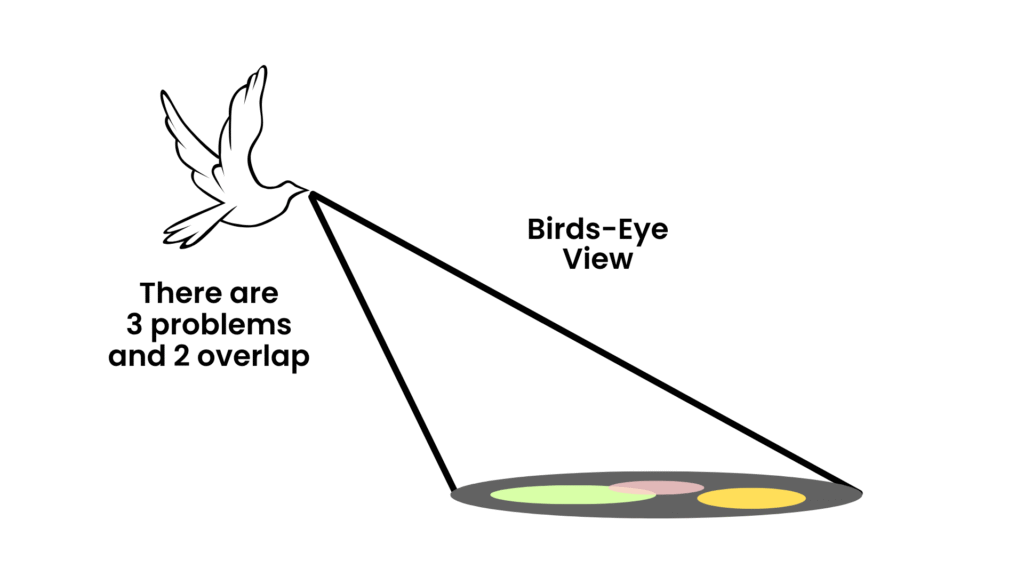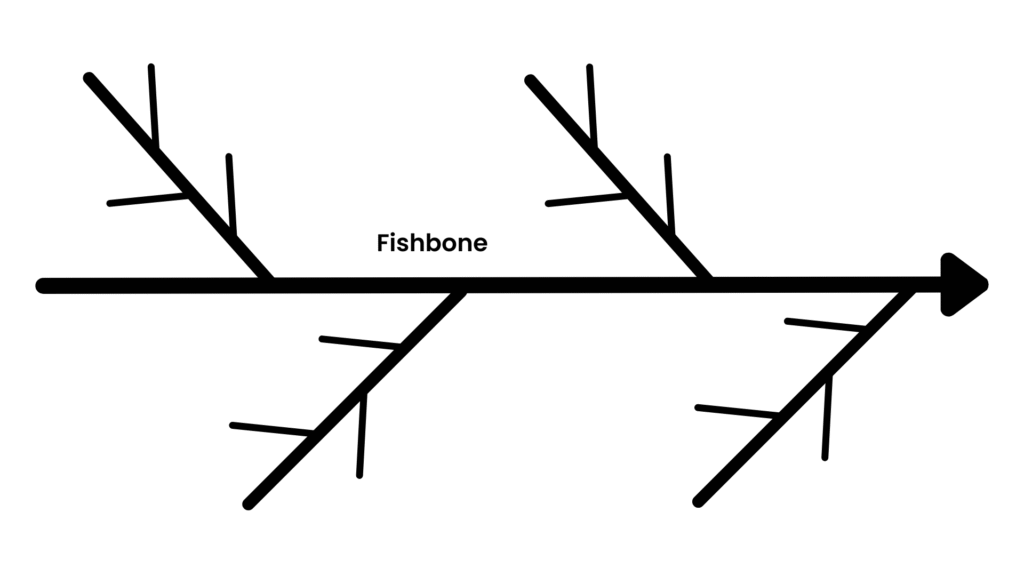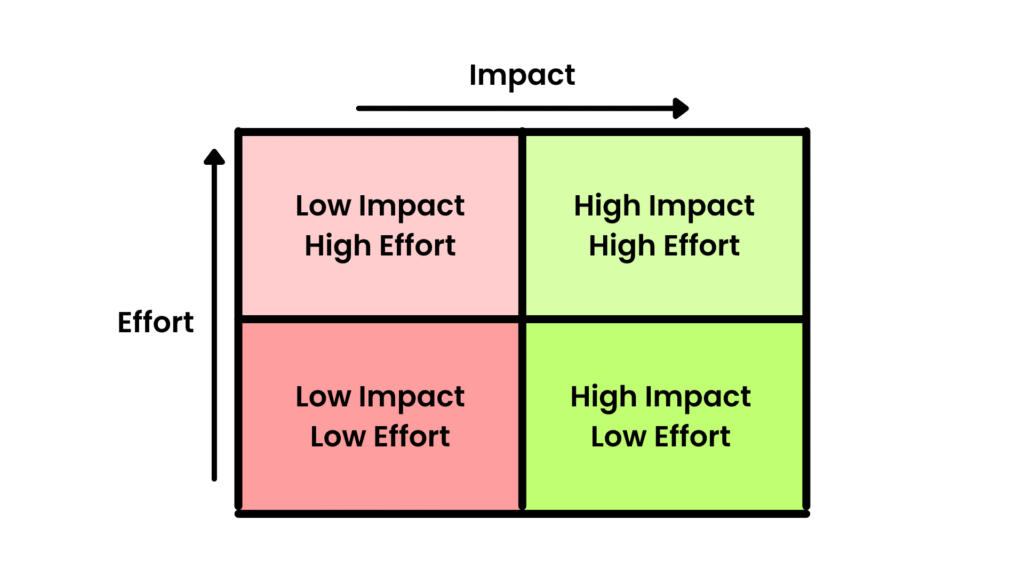In this read, I’ve compiled 3 widely used steps/ frameworks that are used to break down hard multi-dimensional corporate problems so they can be solved effectively. These methods are widely used by Top Consulting firms like Mckinsey, BCG and Bain&Co to break down large client problems.
1. ZOOM Out to get a CLEAR View of the Problem
Before rushing into brainstorming solutions, ask yourself: “What exactly is the problem?”
Many teams mistakenly focus on Symptoms rather than the root cause. For example, “Our Sales is falling” is a symptom. The real issue might be poor market fit, outdated pricing, or weak lead nurturing.
Zooming out helps you put your attention on multiple domains which might be very closely related to the problem, but you might normally not look into to, for the solution.

2. Break it into BUCKETS
Once the core issues are apparent, break it down into buckets.
Two widely used frameworks for these are:
- MECE ( Mutually Exclusive, Collectively Exhaustive )
- Fishbone Diagram ( Ishikawa)
A. MECE Framework:
Breaking a problem down into buckets that don’t overlap but collectively cover everything. In an Ideal scenario, this would be true in real life as well, but in practical life, almost everything overlaps. So, as problem solvers, we try to BUCKET as close to MECE as possible.
B. Fishbone Diagram ( Ishikawa ):

This Framework is very useful in breaking problems that fall into a:
- Process
- People’s Hierarchy
- Technology
- Environment
- etc…
3. Break it down into a 2X2 Impact-Effort Matrix
Not every sub-problem is equally important.
You have to categorise problems into 4 categories, so you can focus on ones that are the most important first:
- High Impact + Low Effort = Quick Wins
- High Impact + High Effort = Strategic Investments
- Low Impact + Low Effort = De-prioritise
- Low Impact + High Effort = Can be Ignored
